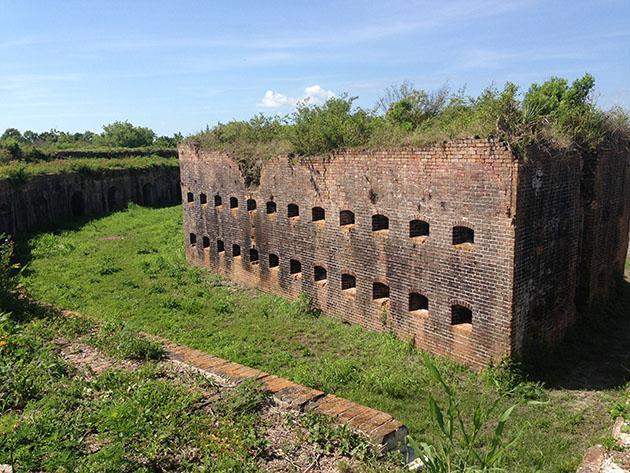Uncovering lost lands
September 26, 2014
Perhaps it’s happened to you— you walk by an abandoned building, seemingly untouched since its doors were last closed, and you wonder what historical relics you might find inside.
When Ashley Simoneaux, A’13, sees an abandoned building, she isn’t satisfied with simply wondering. She goes in and explores.
“I got into it really just out of curiosity. I wanted to see things that most people don’t. I wanted to see what became of the things we discard,” Simoneaux said.
Urban exploration, the activity of looking around old abandoned locations, is not just a New Orleans hobby; there are explorers all over the United States. By sharing experiences and pictures through social media outlets, urban explorers are connecting with each other from across the country.
Simoneaux is just one of many urban explorers in the New Orleans area who braves security, isolated locations and dangerous circumstances to rediscover the forgotten histories of New Orleans buildings.
Kristen Perez recently moved to New Orleans from Chicago, and has embarked on explorations of her own. Perez said her adventures were mostly motivated by Instagram and the large community of people sharing their images of abandoned locations.
Simoneaux said that Instagram has helped her to connect with other urban explorers and expand her network of friends.
Through social media, Simoneaux has networked with people in Connecticut, Philadelphia, North Carolina, New York, Tennessee and many other places.
Many urban explorers got into the activity at a young age. Micah Whatley, one of Simoneaux’s exploration companions, said he got started in his early teens.
“I didn’t start doing anything really big until I was 14. I used to ride my bike around and go into all sorts of old warehouses. From there, I just progressively started exploring bigger and bigger things,” Whatley said.
According to urban explorers, there are many different ways to find a location to explore.
“A lot of finding a spot to explore is luck and keeping your eyes open. Next is research. In general, abandoned buildings are not well-documented unless there is some kind of historical significance to the building,” Perez said. “Even then it can be difficult, but Google can be a great resource.”
The most effective way to find a location, they said, is from other explorers.
“It helps to know people who have been there, done that,” Perez said.
Many urban explorers like to share their stories and experiences with others. One such explorer is Kimberly Clark. Her favorite urban exploration was an excursion to an orphanage in Alexandria, La.
“Although there was not much furniture or other items left behind, the building itself was very beautiful. Cartoon murals were painted on the walls of some of the rooms, and children’s names were still painted on their lockers,” Clark said.
For Clark, the orphanage was one of the locations where she found herself standing still and wondering where the former inhabitants were at that moment.
“When I posted the photos on my website, several of those former inhabitants contacted me with their stories about living there when they were young, some very sad,” Clark said.
Another explorer, Devin Derbes from Metairie, La., also likes to share her findings.
“My favorite place is an abandoned hospital in the central business district of New Orleans,” Derbes said. “The building is a giant, haunting mass of memories, old equipment and Katrina waterlines.”
Although some may be weary of the idea of exploring abandoned places because of the risk of being caught, the risk is part of the thrill for hard-core explorers.
Perez said that, once inside a location, she aims only to learn as much as possible from the conditions of the building, never to tamper with or alter what she finds.
“My intentions in exploring are only to observe and document locations, never to hurt, damage, or destroy them,” Perez said.
Simoneaux said that she takes advantage of the opportunity to see abandoned places because their histories can be there one second and gone the next.
“Most of our old spots either have security now, or have been torn up by graffiti artists, kids and scrappers,” Simoneaux said. “A downside of exploring is that places come and go really quickly.”







